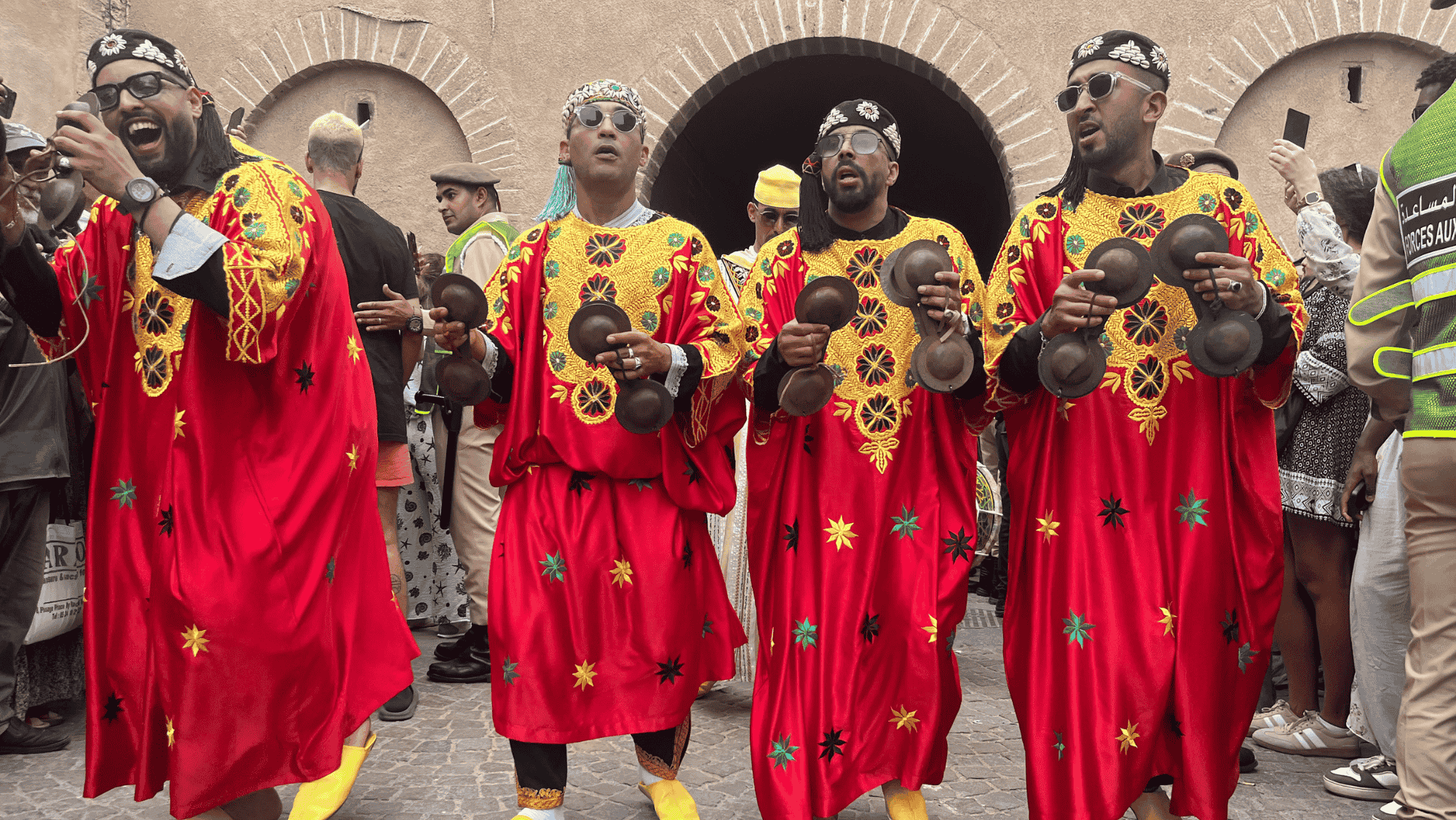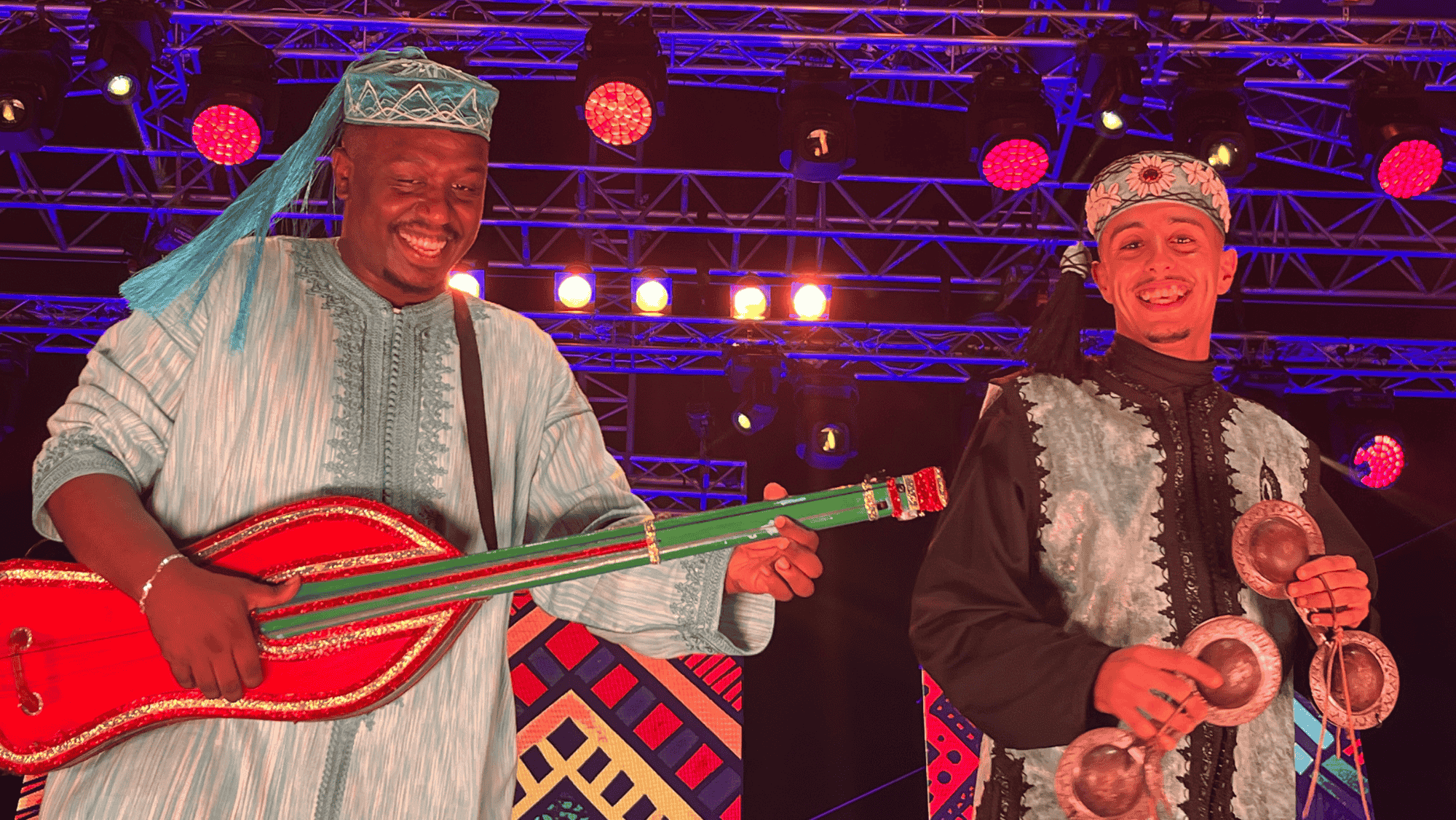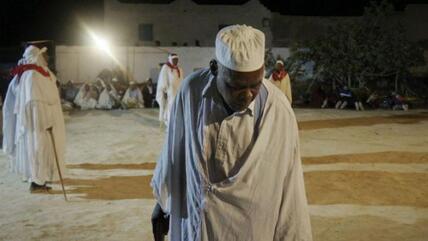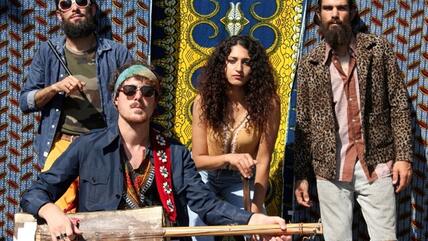A Sufi tradition on the world stage

The sound of castanets fills the air, colourful flags appear at the city gates, and one by one, the Gnawa brotherhoods come dancing into Essaouira's old town, each to a rhythm of its own. Every group wears a uniquely designed djellaba—a floor-length robe—and felt hats with tassels that whirl constantly around their heads.
With this parade, the magic of the Gnaoua and World Music Festival ("Gnaoua" is the French spelling used in the festival's official name) swept into Essaouira, a walled city on Morocco's Atlantic coast. Held for the 26th time this June, the festival is a home for Gnawa, originally a Sufi ritual accompanied by music and practised by the ethnic group of the same name. Now, Gnawa is an internationally renowned music genre.
"Gnawa is always associated with a spiritual encounter," says Houssam Gania. He performed at the opening in Moulay Hassan Square on the harbour in a sky-blue djellaba with his guembri, a stringed instrument unique to the genre.
His fellow musicians, also dressed in blue, play the qraqeb—castanets that ring out sharply, driving the ever-accelerating beat. Gania's red guembri breaks with the colour scheme. Its deep tone has a calming effect, contrasting with the excitement of the castanets.

Tradition and spirituality
Coaxing warm tones from his guembri while leading a Gnawa troupe in performance—this is what makes Houssam Gania a maâlem, a master and scholar of this music. Gania is also a spiritual maâlem, hailing from a family in Essaouira that has practised Gnawa's spiritual side for generations. "I didn’t choose Gnaoua—it chose me. Because of my family and my surroundings, my path was predetermined," he explains.
To become a maâlem in the purely musical sense, one doesn't need to come from a traditional Gnawa family. Others, too, can form a Gnawa group and master the guembri. Two women, Asmaa Hamzaoui and Hind Ennaira, have also reached the status of musical maâlema.
The growth of the Gnawa community in recent years is no coincidence, but rather a direct achievement of the "Gnaoua and World Music Festival", says Maha Marouan, originally from Tangier, in an interview with Qantara. A researcher at Pennsylvania State University, Marouan studies the intersections of ethnicity, gender and religion in Africa and the African diaspora.
Before the festival helped bring Gnawa music into pop culture, Marouan explains, the Gnawa were a marginalised group, originally brought to Morocco through the trans-Saharan slave trade from West Africa. Since the abolition of slavery in Morocco in 1920, many have made a living through ceremonies and public performances.

Black Tunisiansʹ bitter heritage
In the south-eastern Tunisian region of Medenine, music represented a socially marginalised way for post-emancipation blacks to advance. These days thatʹs not enough to satisfy the younger generation. By Marta Scaglioni
The festival was founded in the 1990s by Moroccan businesswoman Neila Tazi. The interest it generated in the Global North led to a deeper engagement with Gnawa culture in mainstream Moroccan society. "Everything popular in Europe or the US eventually becomes fashionable in Morocco too," Marouan says.
A mirror of social transformation
"Gnawa means something very special to me—it comes from deep within," says Houssam Gania in an interview with Qantara. Dressed in sneakers and everyday clothes, he methodically lays out the essence of Gnawa. "Many Moroccans appreciate Gnawa, but there are also people who see it as witchcraft and reject it."
Gnawa music originated as part of an all-night ritual intended to counter possession and expel negative energy. These ceremonies stretch over several hours, during which the maâlem, together with the moqaddimas—women who dance themselves into trance—call forth djinn and other spiritual beings.

Rocking the gateway to the desert
The Franco-Moroccan band Bab L'Bluz has named their debut CD "Nayda!" after the musical youth movement. Stefan Franzen introduces the unique music combo
The music, spiritual practice and lyrics of Gnawa reveal it as a product of cultural convergence: the songs are primarily sung in Darija, Moroccan Arabic, with traces of West African languages such as Hausa. The rituals themselves, considered a Sufi practice, blend West African religious elements with aspects of Judaism.
"This non-purist interpretation of Islam reinforces a common prejudice in Morocco—that people defined as Black are non-believers," says Maha Marouan. Large parts of Moroccan society still assume that people from sub-Saharan Africa are not Muslim. According to Marouan, this belief helped justify the enslavement of these populations for centuries—a chapter of Moroccan history that remains taboo.
Secret rituals
To witness the controversial Gnawa rituals known as lila, one must walk through narrow alleyways, where humid air softens the heat of June nights, to reach a Zaouia—a sacred space for spiritual Gnawa practice.
The courtyard of one such Zaouia in Essaouira lies behind a metal green door. There, Maâlem Baghni sits with his troupe on a red-patterned carpet. Around them, guests of the intimate concert sway with closed eyes, moving gently to the rhythm. The maâlem sings a line, the troupe and audience respond together in chorus, their voices echoing through the courtyard as seagulls hover ghostlike above.
Whether Gnawa should step beyond its spiritual frame is still a point of contention among the maâlems. Many from the previous generation were sceptical of the very idea of the Essaouira festival.
A poster of Maâlem Abdeslam Belghiti, who died in 2010, hangs between brightly tiled columns in a pastry shop in Essaouira, almost like a monument. Printed alongside a black-and-white photo is a description of his life and role within the Gnawa order. Belghiti advocated for a purist approach to spiritual Gnawa practice. He believed maâlems should focus on preserving the complex rites of their respective brotherhoods, each of which follows distinct traditions.
But Maryam Mtiraoui, a Tunisian journalist and expert on Tunisia's equivalent of Gnawa, Stambeli, sees things differently: "It's forward-thinking that Gnawa in Morocco has opened up. In Tunisia, that never happened, and today only two maâlems remain—neither of whom has passed on their knowledge. There's a real risk that Stambeli in Tunisia may soon vanish."
Fusion projects
As well as introducing Gnawa to broader, non-religious audiences, the growing opportunities for women and people from outside the traditional brotherhoods to become musical maâlems are helping to preserve the music. The festival in Essaouira also champions Gnawa's evolution through fusion projects—like the collaboration between Maâlem Houssam Gania and renowned jazz drummer Marcus Gilmore.
Just an hour after his Gnawa set, Houssam Gania is back on stage—this time in the square between the old city and the harbour, performing with Gilmore and his band. As the host, Gania leads the ensemble with his guembri, frequently exchanging musical phrases with the jazz musicians. They, in turn, seem captivated by the ringing qraqeb, the metallic castanets that form the rhythmic foundation upon which both musical traditions speak to one another.
Houssam Gania says their collaboration came easily. "Both musical traditions, after all, have their roots here in Africa," he explains, proud of his—and Gnawa's—West African origins.
That pride isn't universally shared among Moroccans, Maha Marouan points out: "There's an attitude in Morocco that sees itself as superior to the countries south of the Sahara." This mindset stems from the colonial-era categorisation imposed by France, dividing "almost-white" North Africa from "Black" Africa.
As a fresh sea breeze sweeps through the dancing and singing crowd, the musicians in the Gania-Gilmore ensemble give it their all once more. The qraqeb players speed up the rhythm, Gilmore improvises powerfully over the beat, and Houssam Gania strikes the strings of his guembri one last time. Silence follows, then thunderous applause.
This article is an edited translation of the German original.
© Qantara